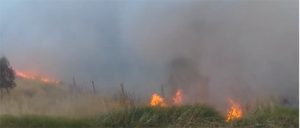On the ABC 7.30 Report, Tuesday 10 March 2020, Professor David Lindenmayer from the Australian National University stated: “What the research has shown is that forests are very unlikely to burn for the first seven years, immediately after logging.” Source: Peter Rutherford
“But then after seven years there is a very steep increase in the risk of very high severity, what we call crown scorching fires and that effect lasts for about 40 years after the forest has started to regrow.”
We were very concerned about the risks of young forests re-burning and that’s exactly what we have seen in significant parts of East Gippsland and north east Victoria.
We’ve written repeatedly to people in government at all levels about these issues. That’s to various state premiers, to senior environment ministers, to forestry ministers, right across the board.
We’ve seen no evidence of a true tangible response from government to take away that extra risk that’s occurring in forests. We need to move on from this ridiculous situation that we’re in, to better protect communities and make them safer. And this is one way that we can do that and that is to remove logging from these forests close to communities and take away that added risk.”
If harvesting is so bad, could Professor Lindenmayer explain why the biggest single ignition point forest fire in recorded history, started in unlogged national park in NSW. It largely burnt through national parks, leaving more than half a million hectares of crown scorched and crown incinerated forests in its wake. Three weeks after ignition, it began burning houses. There was no harvesting in these forests to increase fire risk.
Eighty percent of available public land in NSW, more than 7.15 million hectares, is in national parks and other reserves. Given the wildfire toll on human life, property and livestock, if we were to follow Professor Lindenmayers logic, the highest reduction in risk would likely be to remove national parks from close to communities and take away that added risk.
Professor Lindenmayer failed to offer the solution, that would provide the largest reduction in wildfire risk, regardless of forest age. That is, to increase the area of broadscale fuel reduction burning in parks, state forests and private property native forests. But that suggestion would not support his campaign to stop all native forest harvesting.








